
Technologies
Arvind Envisol has the Infrastructure proprietary technologies needed for cost-effective water treatment including recycling and recovery.
Our water conservation solutions are being used by major industries around the world for industrial, commercial, and municipal applications.
Water optimization is a critical component of all modern establishments given the urgent need to save and recover water. We
have the technologies coupled with the know-how and experience to provide customized wastewater treatment solutions.
- Wastewater Primary Treatment
- Secondary/Biological Treatment
- Tertiary Treatment
- Evaporators
- Sludge Management Technologies
- Drying Technologies
WASTEWATER PRIMARY TREATMENT
Wastewater Primary Treatment is the first step in the water treatment process meant for removing suspended solids (TSS), oil and grease, colour, and odour. The key components in this step are screens, grit chamber, flow equalization tank, and clarifier.
In Wastewater primary treatment, wastewater is fed to a screen to remove all large objects that are suspended in the water. If these solids are not removed before the treatment, they can get clogged in downstream equipment which may cause damage to them and create process inefficiency.
After this, the water gets into a grit chamber where the grit is removed. Grit includes sand, gravel, eggshells, bone chips, seeds, and other materials. Grit removal is necessary to reduce massive deposits in aeration tanks, digester, channels, and conduits. It has the advantage of protecting the mechanical equipment from wear and tear.
The next step in Wastewater Primary Treatment consists of primary settling tanks. These tanks are usually large in size and the solids settle down due to gravity and are removed as sludge from the bottom. Meanwhile, the oil floats on the surface and is skimmed off, 50-60% of the suspended solids get removed and a 30-40% reduction of the five-day biological oxygen demand can be expected.
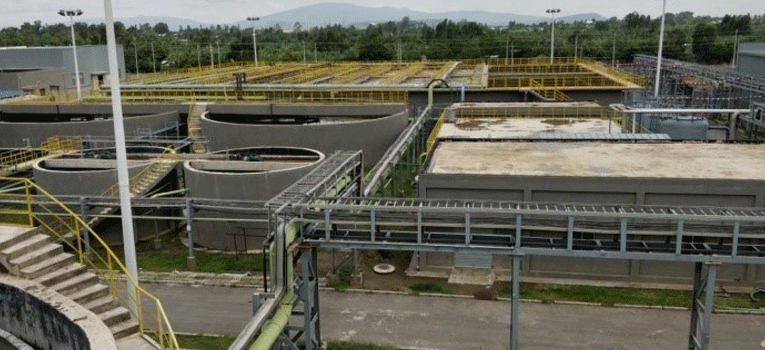
From here on, further processes are done to remove only light particles which can’t be removed through the above processes. Treatments which can be done to remove those particles are:-
- Clarification/Sedimentation
- Coagulation
- Flocculation
Clarification is done to settle the suspended particles at the bottom of the water. The main principle is to keep water at a minimum velocity so that heavier particles settle down. The process of settling down particles depends on the velocity of flow, size of particle, shape, specific gravity, and also the viscosity of the liquid.
There are still some fine particles which are lighter in weight and hence, are not removed in this process. These colloidal particles are removed through a coagulation process in which certain chemical agents are mixed with water, colloidal, and suspended particles, and are collated to form insoluble metal hydroxide known as flocks.
Commonly available coagulants include aluminium sulphate, chlorinated copper, ferrous sulphate, lime, magnesium carbonate, polyelectrolyte, and sodium aluminates.
Flocculation is same as coagulation. Flocculation is the process in which destabilized particles forms into micro flocs and micro flocs get collated with other micro flocs to make floccules which can be settled down. The addition of another reagent called flocculent may promote the formation of the floc.
We achieve results of the above processes by using certain equipment like:-
- Clarifier
- Tube Settler/Lamella Clarifier
- Dissolved Air Flotation (DAF)
- High Rate Solid Contact Clarifier (HRSCC)
- Pipe Flocculator
- E-Enviflox Electro Coagulation System
Clarifier
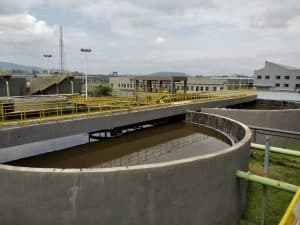
- Solid particulates are removed in the treatment using a clarifier.
- The impurities which are discharged from the bottom are known as sludge, while the particles which float on the surface are known as scum. The inlet stream is stilled upon entry into the clarifier. Hoppers are kept at the bottom of the clarifier to collect the solid particles which are settling down and the clarified liquid exits.
- At the bottom of the hoppers, sludge is drawn off and the liquid exits the unit at the top of the weir. Sludge is dewatered in dewatering unit after it is removed in sludge holding tank from the primary clarifier.
Tube Settler/Lamella Clarifier
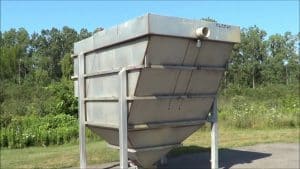
- It is a compact inclined plate type clarifier. Clarification of water, wastewater or liquid having suspended solids and colloidal particles can be clarified using lamella clarifier/Tube settler.
- To provide a large projected area like clarifier lamella clarifier is used which is based on the principle of settling heavier particles under gravity, providing a number of inclined plates.
- Settling capacity is increased by the use of the tube settler. It is most commonly used in a rectangular clarifier reducing the vertical distance a suspended particle must travel.
- Hoppers are kept at the bottom of the clarifier to collect the solid particles which are settling down and the clarified liquid exits.
- At the bottom of the hoppers, sludge is drawn off and the liquid exits the unit at the top of the weir.
- Sludge is dewatered in dewatering unit after it is removed in sludge holding tank from the primary clarifier.
- Stacks of parallel tubes, rectangular or flat pieces separated by a few inches and sloping vertical in the direction of flow are used in order to increase the efficiency of tube settlers.
High Rate Solid Contact Clarifier (HRSCC)
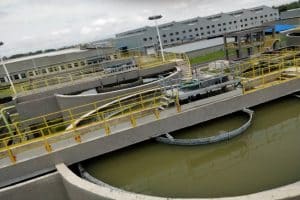
- It is one type of clarifier.
- In HRSCC coagulants and the re-circulating sludge is mixed thoroughly in intimate contact for a long time in the cone sections of the clarifier.
- Influent from equalization tank is pumped to HSRCC. In HRSCC coagulant and poly is dosed, for proper suspended solids removal efficiency. Lime and dolomite can also be dosed for silica and hardness removal. Sludge from HRSCC is removed in sludge holding tank and further dewatered in dewatering system.
Pipe Flocculator
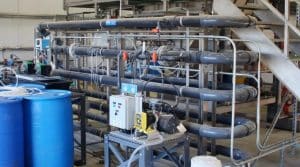
- Turbidity or COD equivalent can be removed by adding coagulant, flocculent and chemical in pipe flocculent.
- Process in pipe flocculator takes place under turbulent flow conditions. Using pipe flocculator with a floatation system can give COD reduction up to 95%.
- It is suitable for nontoxic bio degradable coagulant and flocculent.
Dissolved Air Flotation (DAF)
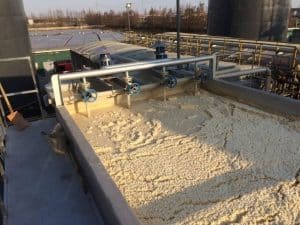
Dissolved air flotation (DAF) is a widely used clarification process. It has applications in several fields which include drinking water, municipal and industrial wastewater, in situ treatment of lakes for algae and seawaters for algae and oil spills. DAF removes particles from water using air bubbles that collide and attach to particles. The particle-bubble aggregates are then separated once they rise to the surface of the tank.
